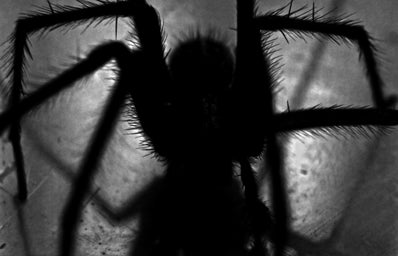If you live in Puerto Rico, you might be well-versed in the myths and legends that we love to tell. If you’re not, you might not know about the creatures that roam the darkest parts of the island– the ones that nobody sees but everyone knows about, the ones we only encounter when we’re alone and least expecting it. Here are a few legends of creatures, monsters, and lonely spirits that inhabit the island.
El Cuco
It starts when we’re young. A mother would scold her stubborn child, trying to beckon them to go to sleep when it’s way past their bedtime, and resorting to summoning this terrifying creature with the mere mention of its name. “If you don’t go to sleep, El Cuco will come and eat you!” she would say, a mischievous glint in her eye. This sentence was enough to get any child to zoom towards their bed and duck under the covers, promising to go to sleep. Parents tell this legend– popular in Latin America and the Caribbean– often to their children as a way to get them to behave, warning them of the monster that comes at night to steal away misbehaving kids. Perhaps the parents knew better than to believe in this silly myth, but the children would hide under their blankets, peeking out when they heard the sound of scratching against the floor under their bed. They wouldn’t look for long after spotting shadows in the darkness, quickly ducking back under the covers and staying away from the edges of the bed, lest El Cuco grab at them and pull them under.
El Chupacabra
Even as we start to grow up, these legends still haunt our surroundings. El Chupacabra is arguably one of the most well-known Puerto Rican legends, having even earned time in the news in the past from scared residents who woke to find their livestock dead with no discernable explanation. Described as a reptilian-like creature with fanged teeth and red eyes, this creature was initially sighted in 1995, when more than 150 farm animals were found either injured or dead, with two punctures on their necks. Roaming the more rural areas of the island, El Chupacabra’s reign of terror was enough for the former mayor of Canovana, a municipality in Puerto Rico, to warrant a search for the alleged beast. It was never found, and unusual incidents of dead farm animals continue to haunt the island (though La Gargola has mostly stolen its spotlight). Some people say they hear its eerie screeches during the night, alarming those nearby of its presence.
Los desmembrados
Los desmembrados is Spanish for “the dismembered.” It’s a legend that originated in Lajas, a municipality in the southwest region of the island, where residents have witnessed incomplete bodies wandering around a specific road, PR-116. It begins with dogs barking erratically in the middle of the night, a warning sign for those curious enough to venture out of their homes to see what lurks on the deserted road. The bodies follow– a spreading of torsos without limbs, bodies from the waist down, even lone legs trudging along the road. It is theorized that these roaming bodies are the spirits of those who have died in the many car accidents that have occurred on this road, which usually ended in dismemberment. It is another reason to keep our eyes trained when driving in the darkness, for we might stumble upon a few dismembered spirits.
El Perro de Piedra
Not all the legends we hear are of terrifying monsters or restless spirits that lurk in the shadows. El Perro de Piedra (“the stone dog”) is based on an oddly shaped rock found in the Castle of San Geronimo in San Juan. The story of this stone dog can vary. One version tells the story of a soldier who, during the times when this castle was a Spanish military fort, had taken care of a stray dog he found one night when roaming the streets of Old San Juan. The dog became his closest companion, but he was forced to leave his pet to go fight in Cuba, where he died. His dog went to the soldier’s former guard post, where he still awaits for any sign of his owner. The other version follows a similar route, though his owner was instead a fisherman who left his dog because of raging seas, and the dog still waits at the edge of the island for him to come back. The rock has deteriorated with time, and the stone dog is no longer there, adding to the somber tale of a loyal animal who waited for an owner that never came back.
Next time you’re traveling along the island and see unidentifiable shadows, or hear odd sounds under your bed in the middle of the night, you might want to be weary. We are not the only ones living here.


